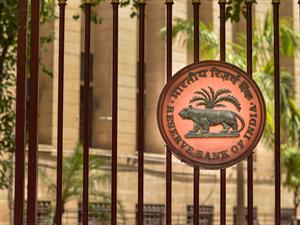
PUMPA - SMART LEARNING
எங்கள் ஆசிரியர்களுடன் 1-ஆன்-1 ஆலோசனை நேரத்தைப் பெறுங்கள். டாப்பர் ஆவதற்கு நாங்கள் பயிற்சி அளிப்போம்
Book Free DemoRBI
The Reserve Bank of India (RBI) functions as the Central Bank of India and plays a pivotal role in the supply of money in the economy. It is headed by a Governor who was appointed by the Union government.

RBI Headquarters
The RBI was established in \(1935\), according to the provisions of the Reserve Bank of India Act, \(1934\). During the early stages, it was owned privately; later, in \(1949\), it was nationalised and came under the complete control of the Government of India.
Mumbai: The Central office of the Reserve Bank of India was earlier established in Calcutta, which was later changed to Mumbai in \(1937\).
Functions of RBI:
The RBI performs various important functions which aid the growth and development of the country. Some of the entitled functions of the Central Bank are listed below.
1. Printing and circulation of currency.
2. Custodian of Foreign exchange.
3. Maintaining price stability.
4. Formulation of Monetary Policy.
5. Banker to the Government.
6. Banker’s Bank/ Lender of last resort.
7. Controller of Credit.
8. Collection and publication of data (RBI Bulletin and Report on Currency and Finance).
9. Acts as a Clearinghouse for banks.
10. Development and promotional functions.
1969: This year holds significance in the banking history of India as \(14\) major banks were nationalised during this year. The second nationalisation of banks took place in the year \(1980\).
Monetary Policy of RBI:
The Reserve Bank prepares the “Monetary Policy” which plays a crucial role in allocating credit for various developmental projects that the government undertakes for the country's welfare.
The Monetary policy aids the Central Bank to control inflation, interest rates, availability of Credit and the Money Supply.
Monetary Policy Committee (MPC):
The Monetary Policy Committee was created by amending the RBI Act of \(1934\). This committee was formed in the year \(2016\) for implementing the “Flexible Inflation Targeting Framework”.
The MPC is created to ensure accountability and transparency in charting the Monetary Policy of the RBI. It determines the interest rates essential to achieve the inflation target.
Inflation Target: The Inflation targets for the country are set once in \(5\) years. The Government of India sets it after consulting the Central Bank.
The committee contains six members, three members from government and another three members are selected from the RBI.
Reference:
RBI Headquarters: PhotographerIncognito / Shutterstock.com